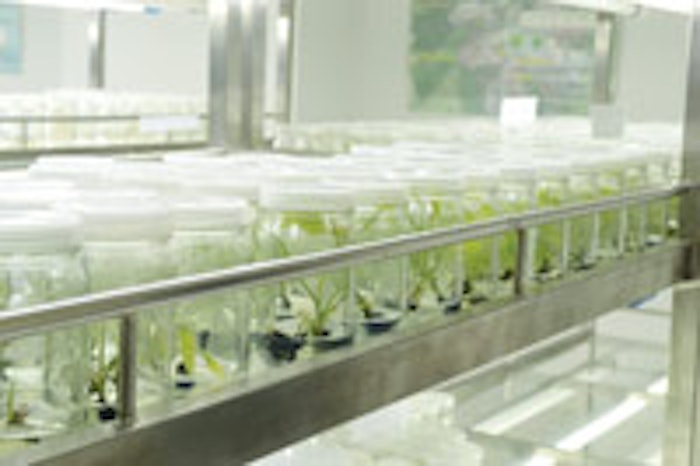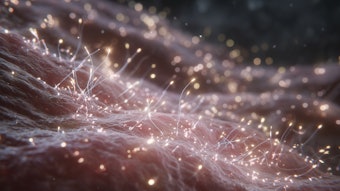
Although people are living longer lives, it’s clear that most are not happy with the effects of aging. Aging is inevitable and, even though clients can’t stop the clock, they can slow down the signs of aging by eating the right foods, exercising and taking care of the body’s largest organ—the skin.
With aging, skin becomes thinner and dryer, age spots and wrinkles appear, elasticity is lost as collagen production declines, and skin’s overall appearance is more dull—lacking youthful vibrancy. And although there are many tools available to help the fight against aging, science has recently zeroed in on an incredibly powerful anti-aging ally: plant stem cells.
According to the research report Global Cosmeceuticals Market Outlook 2016 from business consultancy company RNCOS, plant stem cell technology is expected to propel the global cosmeceutical market forward at a rate of 7.7% during 2012–2016.
Driving force
Why is there so much interest in plant stem cell technology? The answer may lie in the simple fact that it removes the ethical dilemma plaguing the scientific community. Plant stem cells allow the opportunity to harness the power of stem cells without the controversy that surrounds human stem cell harvesting.
Stem cells are some of the most important cells in the human body. They are biological cells that have the potential to regenerate tissue over a lifetime. They are unprogrammed; found in all multicellular organisms; can divide and differentiate into diverse specialized cell types with specific functions; and can self-renew to produce more stem cells.
In humans and animals, there are two broad types of stem cells: embryonic stem cells, which are isolated from the inner cell mass of blastocysts; and adult stem cells, which are found in various tissues. In adult organisms, stem cells and progenitor cells act as repair systems for the body, replenishing adult tissues. In a developing embryo, stem cells can not only differentiate into all of the specialized cells—called pluripotent cells—but also maintain the normal turnover of regenerative organs, such as blood, skin or intestinal tissues.
The classical definition of a stem cell requires that it possess the following two properties.
- Self-renewal: The ability to go through numerous cycles of cell division while maintaining the undifferentiated state (replenishing itself).
- Potency: The capacity to differentiate into specialized cell types. Stem cells are either totipotent or pluripotent, meaning they are able to give rise to any cell type, although multipotent or unipotent progenitor cells are sometimes referred to as stem cells.
Human stem cells are found in every human tissue, including the epidermal layer of the skin. They are typically activated in response to an injury. They are also the source of continuous skin growth and cell regeneration, but can be harmed by internal factors, such as stress, smoke or an unbalanced diet, as well as external factors, such as UV radiation or pollution. This jeopardizes the regenerating capability of stem cells. It is essential that lost skin stem cells are replenished, which may be able to be achieved by using products with plant stem cells.
Moral and ethical dilemma. Stem cells have been a topic of increased research and advancement in the past decade—along with passionate debate from those who tout their health-promoting potential and those who warn of the slippery ethical slope they represent. However, scientists have recently found a way to gain some of the health benefits of stem cells without the moral ambiguity: by harvesting them from plants and fruit instead of human tissue. These plant stem cells show remarkable promise, and they’re already proving themselves to be powerful skin-healers.
Plant stem cells are innately undifferentiated cells located in the meristems of the plant, where growth takes place. Plant stem cells serve as the origin of plant vitality, because they never undergo an aging process. They maintain themselves while providing a steady supply of cells to different tissues and organs in plants, replenishing dying cells and fixing damaged tissue. Meristematic (stem) cells are not at all differentiated, and are capable of continued cellular division, also known as cell regeneration. They are concentrated in the roots, buds and fruits of plants. Plant stem cells are characterized by two distinctive properties: the ability to create all differentiated cell types, and the ability to self-renew so that the number of stem cells is maintained.
Plant stem cells and the epidermis
To understand just how plant stem cells improve the complexion and rejuvenate damaged tissue in skin caused by age, environmental toxins and sun damage, it’s important to understand the effects of aging on epidermal stem cells.
The skin’s epidermis continues to self-renew more than a thousand times over the course of a human lifetime, due to the presence of stem cells.1 The primary function of these cells is to replace damaged or dead cells. These cells lie dormant until they receive signals from the body to begin the repair mode and regenerate damaged tissue. However, as people age, the number of skin stem cells decrease, and their ability to repair the skin becomes less efficient. Such a decline in skin stem cells also means that repair of wounds—which includes redness, acne scars, age spots, sun damage, and sagging collagen and elastin—no longer takes place as quickly or efficiently as it once did. This means your client’s acne scar may take weeks or even months to fade. Meanwhile, other wounds for the same repair process, such as fine lines and wrinkles, may remain unaddressed.
When looking for ways to encourage this regeneration process, help is available directly from nature in the form of plant stem cells. The exciting thing about plant stem cells is that the skin-rejuvenating benefits of stem cells can be taken advantage of without challenging ethical standards. Plant stem cells help to protect human stem cells from deterioration and damage, and stimulate them to become active once again.
Growing in popularity
Plant stem cells are quickly becoming applauded around the world. They are bioavailable and sustainable without controversy because they are:
- Safe—containing no environmental contaminants, such as pesticides, toxins and heavy metals, and many plant cells are approved by organic certifying agencies;
- Available—throughout the year, cell growth can be induced within a very short time in the laboratory;
- Unlimited—meristem cell cultivation takes place in high-capacity labs, and there is access to 100% of the plant molecules, even to those that are not available at harvest time;
- Standard quality—every batch is standardized by controlled biochemistry processes in sterile laboratory environments; and
- Sustainable—containing no genetically modified organisms (GMOs), using eco-friendly harvesting and cultivation, and freeing up land for food crops, while saving water.
Plant stem cell research and development is a promising and exciting frontier in skin care. As research develops, this emerging skin care segment will continue to shed new light on the powerful anti-aging and regenerative benefits that topical application of plant stem cells have on skin.
REFERENCES
- B Alberts, A Johnson, J Lewis, et al., Molecular Biology of the Cell, 4th Edition, New York Garland Science (2002)
Szilvia Hickman is the co-owner and senior vice president of Szép Élet, the exclusive distributor of ilike organic skin care. Hickman is also a member of the Green Spa Network Personal Care Product committee. She can be reached [email protected].










